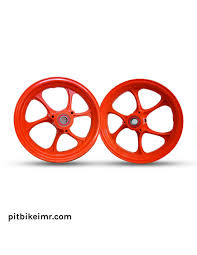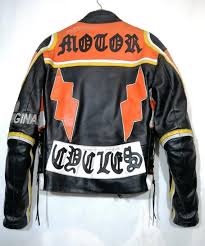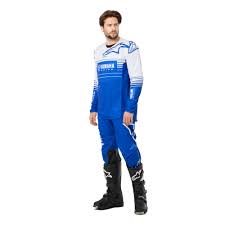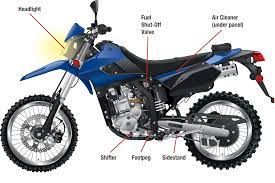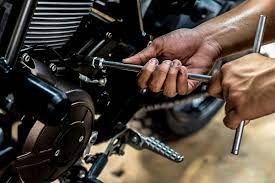
Motorcycle Maintenance: Keeping Your Ride in Top Shape
Owning a motorcycle is not just about the thrill of riding; it also comes with the responsibility of proper maintenance. Regular upkeep is essential to ensure your bike performs optimally, remains safe, and extends its lifespan. Whether you’re a seasoned rider or a newbie, understanding the basics of motorcycle maintenance is crucial. In this article, we will explore some key aspects of keeping your ride in top shape.
- Regular Inspections: Start by conducting routine inspections of your motorcycle. Check the tires for wear and tear, ensuring they are properly inflated for optimal grip and handling. Inspect the brakes to ensure they are responsive and not worn out. Look for any signs of fluid leaks or loose bolts that may compromise safety.
- Oil Changes: Regular oil changes are vital to keep your engine running smoothly. Refer to your motorcycle’s manual for recommended intervals and use high-quality oil suitable for your bike’s engine type. Neglecting oil changes can lead to increased friction, decreased performance, and potential engine damage.
- Chain Maintenance: The chain is a critical component that requires regular attention. Keep it clean and lubricated to prevent excessive wear and prolong its life. Adjust the tension as needed to maintain proper alignment with the sprockets.
- Battery Care: A well-maintained battery ensures reliable starts every time you hop on your bike. Check the battery terminals for corrosion and clean them if necessary using a mixture of baking soda and water. Consider using a battery tender or charger during periods of inactivity to maintain optimal charge levels.
- Fluid Checks: Pay attention to all fluids in your motorcycle, including coolant, brake fluid, and transmission oil (if applicable). Ensure they are at appropriate levels and replace them as recommended by the manufacturer.
- Air Filter Cleaning: A dirty air filter can restrict airflow to the engine, affecting performance and fuel efficiency. Regularly inspect and clean or replace the air filter as needed to maintain optimal engine performance.
- Suspension Maintenance: Your motorcycle’s suspension system plays a crucial role in providing a smooth and stable ride. Inspect the forks and shocks for any leaks or signs of damage. Adjust the suspension settings according to your riding style and preferences.
- Electrical System: Check all lights, indicators, and switches regularly to ensure they are functioning correctly. Replace any faulty bulbs or fuses promptly.
- Proper Storage: When not in use, store your motorcycle in a dry and secure location, preferably with a cover to protect it from dust and moisture. Consider using a fuel stabilizer if storing for an extended period to prevent fuel degradation.
- Professional Servicing: While many maintenance tasks can be done by motorcycle owners themselves, it’s essential to schedule regular professional servicing for comprehensive inspections and specialized repairs.
Remember, proper maintenance not only ensures your safety but also enhances the longevity of your beloved motorcycle. By following these basic guidelines, you can keep your ride running smoothly, allowing you to enjoy countless miles of thrilling adventures on the open road. Happy riding!
6 Essential Tips for Motorcycle Maintenance: Keeping Your Ride Safe and Reliable
- Check your tyres regularly for wear and tear, and make sure they are properly inflated.
- Ensure all lights, indicators and brakes are in working order before you set off on a ride.
- Change the oil and filter according to the manufacturer’s recommended schedule.
- Check all nuts, bolts and screws for tightness every few weeks to ensure that nothing is loose or worn out.
- Clean your motorcycle regularly to prevent corrosion and rusting of parts over time.
- Have your motorcycle serviced annually by a professional mechanic to keep it running smoothly and safely for years to come!
Check your tyres regularly for wear and tear, and make sure they are properly inflated.
The Importance of Tyre Maintenance for Motorcycles
When it comes to motorcycle maintenance, one of the most critical aspects to pay attention to is your tyres. These small patches of rubber are what keep you connected to the road, ensuring stability, grip, and overall safety. Regularly checking your tyres for wear and tear, as well as maintaining proper inflation levels, is paramount for a smooth and secure ride.
Firstly, it’s crucial to inspect your tyres regularly for signs of wear and tear. Look out for any cracks, bulges, or cuts on the tyre surface. These can weaken the tyre’s structure and increase the risk of a blowout while riding. Additionally, check the tread depth using a tread depth gauge or by examining the wear indicators on your tyres. Worn-out treads reduce traction on wet surfaces and compromise handling and braking performance.
Proper inflation is equally important. Underinflated tyres can lead to poor handling and reduced fuel efficiency. On the other hand, overinflated tyres may result in a harsh ride and decreased traction due to a smaller contact patch with the road. Refer to your motorcycle’s manual or consult with a professional to determine the recommended tyre pressure for your specific bike model.
Regularly monitoring tyre pressure is essential as well since they naturally lose air over time. Invest in a reliable tyre pressure gauge and check your tyre pressure at least once a month or before long rides. Remember that temperature fluctuations can also affect tyre pressure; therefore, it’s crucial to adjust accordingly.
Maintaining proper tyre condition and inflation not only enhances safety but also extends the lifespan of your tyres. By preserving optimal traction and handling characteristics, you can confidently navigate various road conditions while reducing the risk of accidents.
If you notice any abnormalities during your inspections or suspect an issue with your tyres, don’t hesitate to consult with a professional mechanic or visit a trusted motorcycle service centre. They can provide expert advice regarding tyre replacements, repairs, or any other concerns you may have.
In conclusion, taking the time to regularly check your tyres for wear and tear and ensuring they are properly inflated is a fundamental aspect of motorcycle maintenance. By prioritising tyre care, you can enjoy a smoother, safer ride while maximising the longevity of your tyres. Stay vigilant, and keep those wheels rolling!
Ensure all lights, indicators and brakes are in working order before you set off on a ride.
Motorcycle Maintenance Tip: Prioritize Safety by Checking Lights, Indicators, and Brakes
When it comes to motorcycle maintenance, one crucial aspect that should never be overlooked is ensuring all lights, indicators, and brakes are in proper working order before embarking on any ride. This simple yet essential tip can significantly contribute to your safety on the road.
Lights play a vital role in enhancing visibility, both for you as the rider and for other road users. Before setting off, take a moment to inspect all the lights on your motorcycle. Check that the headlight is functioning correctly and properly aligned to provide maximum illumination. Verify that both the front and rear indicators are working correctly, as they help communicate your intentions to other drivers. Additionally, ensure that all brake lights are operational to alert those behind you when you’re slowing down or coming to a stop.
Regularly checking these components not only enhances safety but also ensures compliance with legal requirements. Faulty or non-functioning lights can lead to accidents or even legal consequences if you’re pulled over by law enforcement.
Aside from lights, don’t forget about your brakes—an integral part of any motorcycle’s safety system. Before each ride, test both the front and rear brakes to ensure they engage smoothly and provide adequate stopping power. Listen for any unusual noises or vibrations during braking that may indicate an issue requiring attention.
By prioritizing this simple pre-ride check of lights, indicators, and brakes, you demonstrate a commitment to your safety on the road. It only takes a few minutes but can make a significant difference in preventing accidents or mishaps caused by faulty lighting or braking systems.
Remember that motorcycle maintenance goes beyond regular servicing; it involves proactive measures taken by riders themselves. By incorporating this tip into your routine before every ride, you establish a habit of vigilance towards your own safety and that of others sharing the road with you.
So before you set off on your next adventure, take a moment to ensure all lights, indicators, and brakes are in proper working order. It’s a small step that can provide peace of mind and contribute to a safer riding experience. Stay safe, stay visible, and enjoy the open road!
Change the oil and filter according to the manufacturer’s recommended schedule.
Change the Oil and Filter: A Vital Step in Motorcycle Maintenance
When it comes to motorcycle maintenance, one of the most critical tasks is changing the oil and filter regularly. This simple yet essential step ensures that your bike’s engine stays healthy and performs at its best. By following the manufacturer’s recommended schedule for oil and filter changes, you can keep your ride running smoothly for years to come.
Why is changing the oil and filter so important? Well, over time, engine oil becomes contaminated with dirt, debris, and byproducts of combustion. This can lead to increased friction, reduced lubrication efficiency, and potential damage to vital engine components. By changing the oil and filter at the recommended intervals, you remove these contaminants and ensure that fresh, clean oil circulates through your engine.
So how often should you change the oil and filter? The answer varies depending on factors such as your motorcycle model, usage frequency, and riding conditions. It’s crucial to consult your bike’s manual or contact a trusted mechanic to determine the manufacturer’s recommended schedule for oil changes.
Typically, it’s advisable to change the oil every 3,000 to 5,000 miles or once a year if you don’t ride frequently. However, if you engage in more aggressive riding or venture into extreme conditions like off-road trails or dusty environments, more frequent oil changes may be necessary.
The process of changing the oil and filter is relatively straightforward but may require some basic tools and knowledge. If you’re comfortable doing it yourself, make sure to gather all necessary supplies such as new oil (of the correct viscosity) and a compatible filter. Follow proper procedures for draining the old oil safely and disposing of it responsibly.
If you’re unsure about performing this task yourself or prefer professional assistance, consider taking your motorcycle to a trusted mechanic or service center. They have expertise in handling different bike models and can ensure that everything is done correctly.
By adhering to the manufacturer’s recommended schedule for oil and filter changes, you can maintain your motorcycle’s engine in optimal condition. This not only improves performance but also extends the life of your bike. Remember, regular maintenance is an investment in your safety, enjoyment, and the longevity of your beloved ride.
So, mark your calendar or set a reminder to change the oil and filter according to the recommended schedule. Your motorcycle will thank you with smoother rides and a longer lifespan on the road.
Check all nuts, bolts and screws for tightness every few weeks to ensure that nothing is loose or worn out.
The Importance of Tightening: Keeping Your Motorcycle Secure
When it comes to motorcycle maintenance, there’s a crucial tip that should never be overlooked: regularly checking all nuts, bolts, and screws for tightness. This simple task can make a significant difference in ensuring your ride remains secure and safe on the road.
Over time, the vibrations and stresses of riding can cause these fasteners to loosen or even become worn out. Loose or missing nuts, bolts, or screws can compromise the structural integrity of your motorcycle, leading to potential accidents or damage. That’s why it’s essential to incorporate this routine check into your maintenance schedule.
Every few weeks, take the time to inspect all visible fasteners on your bike. Start with the obvious ones like those securing mirrors, handlebars, foot pegs, and fairings. Use an appropriate tool (such as a socket wrench or Allen key) to tighten any loose fasteners you come across.
Pay attention not only to the tightness but also to signs of wear or damage. If you notice stripped threads or worn-out fasteners, replace them promptly with suitable replacements. It’s always better to err on the side of caution and ensure you’re using high-quality parts that are specifically designed for your motorcycle.
By regularly checking and tightening nuts, bolts, and screws, you’re taking a proactive approach towards preventing potential hazards on the road. This simple practice can save you from unexpected mishaps caused by loose components while enhancing overall safety during your rides.
Remember that if you’re unsure about any aspect of motorcycle maintenance or lack experience in this area, it’s always advisable to consult a professional mechanic who specializes in motorcycles. They have the expertise and knowledge to address any concerns you may have and perform comprehensive inspections when needed.
So don’t overlook this important tip – take a few minutes every few weeks to ensure that all nuts, bolts, and screws are properly tightened on your motorcycle. By doing so, you’ll have peace of mind knowing that your ride is secure, and you can fully enjoy the exhilaration of the open road.
Clean your motorcycle regularly to prevent corrosion and rusting of parts over time.
Preserving Your Ride: The Importance of Regular Motorcycle Cleaning
When it comes to motorcycle maintenance, one crucial tip often overlooked is the regular cleaning of your beloved ride. Keeping your motorcycle clean not only enhances its appearance but also plays a vital role in preventing corrosion and rusting of its parts over time. In this article, we will delve into the significance of regular cleaning and how it can help preserve your motorcycle.
Riding on the open road exposes your bike to various elements like dirt, dust, grime, and even road salt. These contaminants can accumulate on the surface of your motorcycle and penetrate into hard-to-reach areas, leading to corrosion and rusting if left unattended. By incorporating regular cleaning into your maintenance routine, you can effectively combat these issues.
Start by washing your motorcycle with mild soap or a dedicated bike cleaner. Use a soft sponge or cloth to gently remove dirt from all surfaces, including the bodywork, engine components, wheels, and other exposed parts. Pay extra attention to crevices and hard-to-reach areas where dirt tends to accumulate.
After rinsing off the soap thoroughly with clean water, dry your bike using a microfiber cloth or chamois to prevent water spots. It’s essential to ensure that no moisture is left behind as it can contribute to rust formation.
Once your motorcycle is dry, apply a layer of wax or polish specifically designed for motorcycles. This protective coating acts as a barrier against harmful elements while enhancing the shine of your bike’s paintwork. Additionally, consider using specialized products like chrome polish for chrome parts and protectants for rubber components.
Regularly cleaning your motorcycle not only helps prevent corrosion but also allows you to inspect its condition more thoroughly. During the cleaning process, keep an eye out for any signs of damage or wear on various parts such as screws, bolts, cables, or hoses. Identifying potential issues early on can save you from costly repairs down the line.
Remember, cleaning your motorcycle is not just about aesthetics; it’s a crucial step in maintaining its longevity and performance. By incorporating regular cleaning into your maintenance routine, you can protect your ride from the damaging effects of corrosion and rusting, ensuring that it remains in top-notch condition for years to come.
So, grab your bucket, sponge, and cleaning supplies, and give your motorcycle the care it deserves. With a little time and effort invested in regular cleaning, you’ll be rewarded with a gleaming ride that continues to turn heads on the road while staying protected from the harmful effects of corrosion.
Have your motorcycle serviced annually by a professional mechanic to keep it running smoothly and safely for years to come!
Regular servicing by a professional mechanic is a crucial tip for maintaining the longevity and performance of your motorcycle. While some riders may attempt to handle maintenance tasks themselves, there are certain aspects that require the expertise of a trained professional. By having your motorcycle serviced annually, you can ensure that it continues to run smoothly and safely for years to come.
A professional mechanic possesses the knowledge and experience to conduct thorough inspections and identify any potential issues that may go unnoticed by an untrained eye. They have access to specialized tools and diagnostic equipment, allowing them to accurately assess the condition of various components.
During an annual service, a mechanic will typically perform a range of tasks, including checking and adjusting vital systems such as brakes, suspension, and steering. They will also inspect the engine, transmission, and electrical system for any signs of wear or damage. Additionally, they will replace essential fluids such as oil and coolant, ensuring optimal performance.
By entrusting your motorcycle to a professional mechanic annually, you can catch any developing problems early on before they escalate into more significant issues. This proactive approach not only helps maintain the reliability of your bike but can also save you from costly repairs down the line.
Furthermore, regular servicing contributes to your safety on the road. A well-maintained motorcycle is less likely to experience unexpected breakdowns or malfunctions while riding. The mechanic’s expertise ensures that all safety-critical components are in proper working order, providing peace of mind during your journeys.
Lastly, having your motorcycle serviced annually by a professional mechanic helps preserve its resale value. A documented service history from reputable mechanics demonstrates that the bike has been well cared for throughout its life. This can be an attractive selling point when it comes time to upgrade or sell your motorcycle.
In conclusion, investing in an annual service by a professional mechanic is essential for keeping your motorcycle running smoothly and safely for years to come. It not only ensures optimal performance but also provides peace of mind and contributes to the longevity of your beloved ride. So, make it a priority to schedule that annual service and enjoy many more miles of thrilling adventures on your well-maintained motorcycle!


